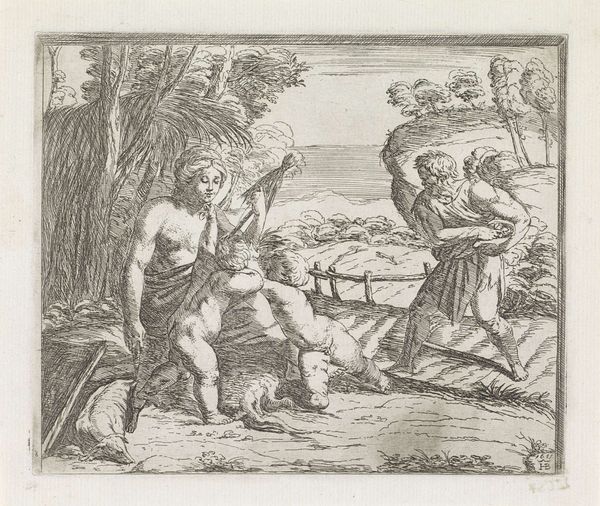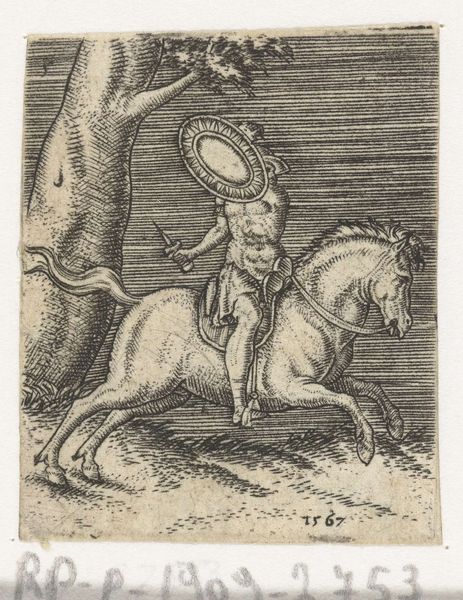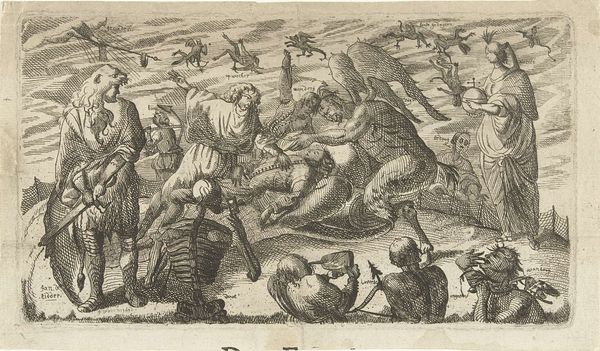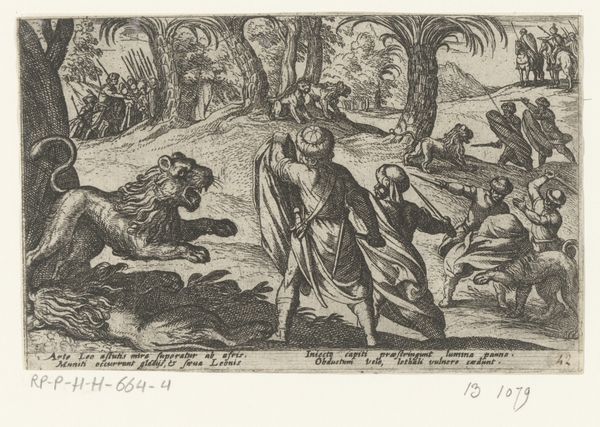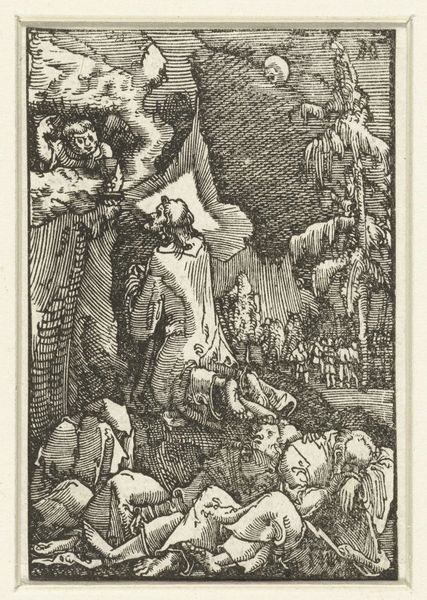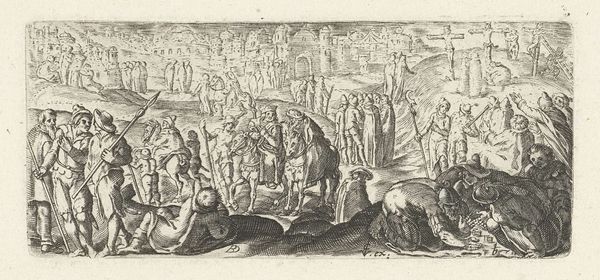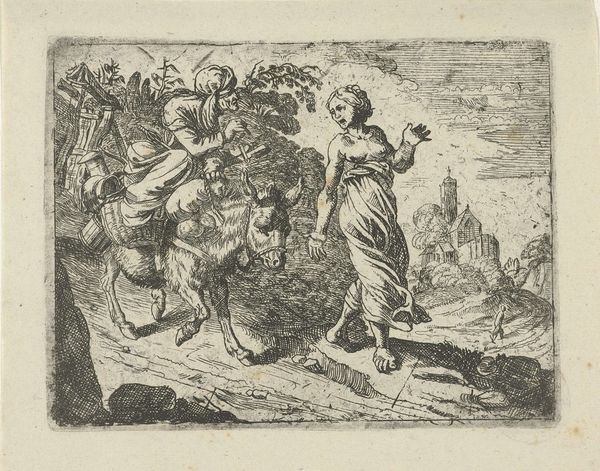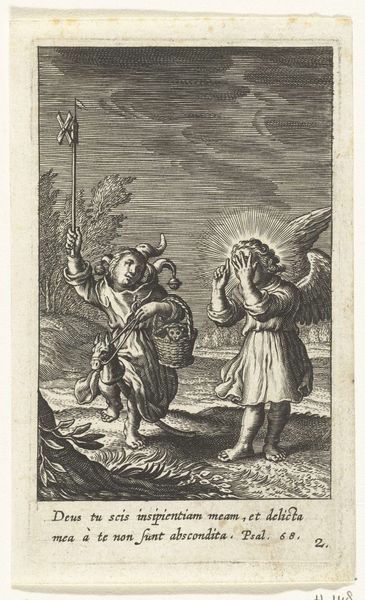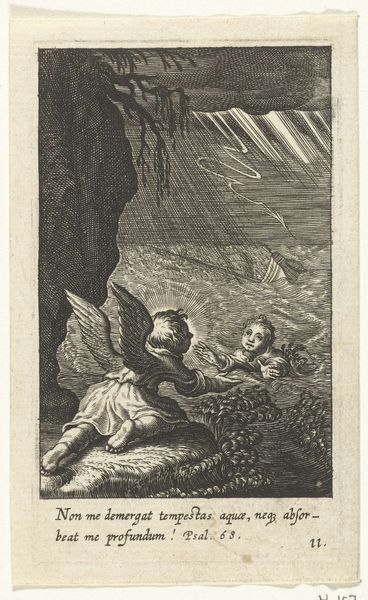
print, engraving
#
narrative-art
# print
#
landscape
#
figuration
#
romanticism
#
genre-painting
#
engraving
Dimensions: height 35 mm, width 77 mm
Copyright: Rijks Museum: Open Domain
Curator: This engraving by William Blake, made between 1820 and 1821, is titled "Boy with Two Oxen and a Plough." The stark black-and-white creates an immediate contrast. Editor: It evokes a sense of stark labor. The sharp lines create a dramatic feel, particularly with the figures dominating the small space. The print technique creates an accessible, almost democratic feel, but I sense a real tension between man and nature. Curator: The engraving as a medium allowed for relatively widespread distribution and influenced public imagery and societal roles of agricultural life. Consider also, the materials needed for engraving itself: metal plates, tools. Blake's artistic labour echoes that of the field. This image speaks to broader conversations about labour practices within agricultural economies during the time. The Romantic movement also emphasized feeling over form, perhaps seen here. Editor: Exactly. The two men appear somewhat disconnected, almost weary, suggesting their lives may be a continuous, exhaustive cycle. It does capture that spirit of Romanticism where depictions of ordinary life can represent social inequalities during the eighteenth and nineteenth centuries. The existence of printmaking changed accessibility for the arts within specific audiences. Curator: One also can't ignore the sun rising above a mountain. It has the quality of a halo, evoking ideas surrounding innocence while emphasizing the labour itself. Blake, himself, engaged with printmakers in London, a craft-based process rooted in labor and commerce, a reality that challenges assumptions of him as some isolated artistic genius. Editor: Certainly. It’s difficult not to reflect on these complex histories of art production and its implications. Art rarely appears spontaneously without being influenced by sociopolitical conditions, something deeply considered with this one. Curator: This examination, whether viewed through technique, or context helps to unravel some of the complexities within artmaking, leading us to a new level of understanding and cultural exchange. Editor: It's about unearthing stories and prompting fresh ways to interact and rethink how imagery impacts the lives of those near and far.
Comments
No comments
Be the first to comment and join the conversation on the ultimate creative platform.
